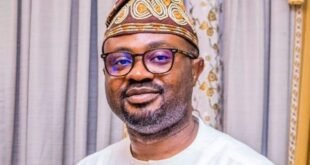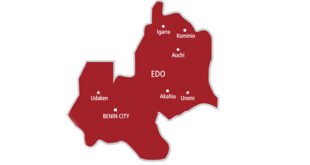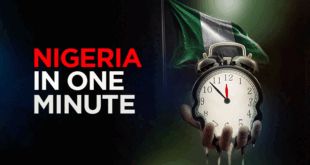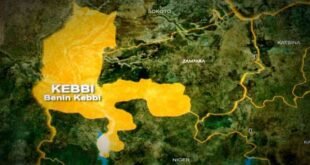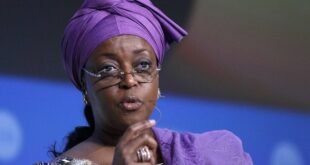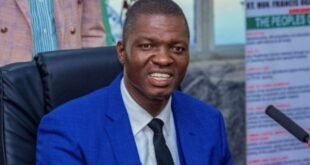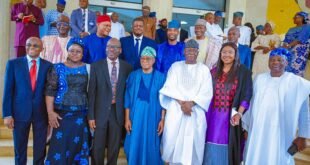Nigeria has a defrasty and overwhelming infrastructure deficit. The deficit is so great that the World Bank had to express it to express it to be appreciated by lay readers.
The way of expressing the apparently unfathomable infrastructure deficit is that if Nigeria wants to bring its infrastructure to tolerable limits, it must invest $ 10 billion per year for a period of 10 years to make significant progress.
What the World Bank was saying is that Nigeria needs a minimum of $ 1 trillion to make its infrastructure a little more tolerable. The painting painting of the World Bank did not concern infrastructures to global standards with $ 1 trillion. It was a matter of bringing it to tolerable limits.
President Bola Ahmed Tinubu painted a darker picture of the infrastructure deficit of Nigeria in his speech at the top of the public-private partnership (PPP) of 2025.
The president estimated the infrastructure deficit of Nigeria to an incredible $ 2.3 trillion. The figure listed by the president cannot be expressed in Naira at the current exchange rate. With the Naira that irreparably exchanges N1,600 per dollar at the official window, the sum of $ 2.3 trilioni would be something like N5.000.000, 000.000.000. This can be what mathematics call nonlion.
The president frankly stated that the deficit was more than the only government can face.
With the burden of the country’s debt that almost crosses the threshold of the World Bank 55 % of the gross domestic product (GDP), it is not possible to borrow the government to finance the deficit. Nobody can give Nigeria that type of mammoth sum because it cannot reimburse.
The president listed a very credible way of facing the deficit. It is an option that I have supported in the last 10 years in this column.
The solution is in ppp. This is the option for which the president in the end was satisfied. It is an option that will not only allow Nigeria to face the enormous infrastructure deficit with minimal stress, but also allow the private sector to create jobs and make money at the same time.
In his speech the president did not even give a complete roundup of the deficit. He mentioned only the main ones such as power, roads, health and education. He did not talk about the railway system which underwent a total collapse about 30 years ago and has just been rehabilitated at the snail speed. He remained curiously in silence with the shameful import of Nigeria of kitchen gas when the international oil companies (IOC) go to the flaring of gas of the value of N800 billion per year.
Nigeria must invest billions of dollars in the construction of gas processing systems to stop the annual import of 1.5 million tons of cooking gas and an increase in consumption.
The talking state of the country’s railway system is the consequence of decades of abandonment by subsequent administrations in the center.
Very little was added to the railway, the British colonial masters built to evacuate the raw materials from the farms to the north towards the ocean to the south to send in Great Britain.
Even the alarming rate of food inflation could be partially tracked down by the bad development of the railway system which remains the cheapest means for the evacuation of goods.
The evacuation of food products from farms in inaccessible rural communities on dilapidated roads dotted with hundreds of illegal toll gates mounted by corrupt agents of contrast has intensified the cost of food.
The illegal toll doors could be avoided if the railway system was functional. This would drastically reduce the cost of transporting food to the markets.
The Nigerian roads are in the deplorable state. The country has one of the lowest kilometers of the world road network. This is also poorly maintained. Most of the 2.3 trillions of dollars listed by the president will be invested in road construction and maintenance.
The president said that his administration was determined to provide the framework for the participation of the private sector in the rehabilitation of financing infrastructures.
The absence of a framework defined for participation was the main misunderstanding to financing the private sector of infrastructure rehabilitation.
Everyone knows that the participation of the private sector in the financing of the infrastructure deficit is the easiest way to deal with the intimidating problem.
However, the private sector had always been frightened by the quarrel between the federal government and the dealer of the MM2 internal terminal at the Murtala Mohammed International Airport in Ikeja, Lagos.
The terminal was built during the second mandate of Olusgun Obasanjo as president. Obasanjo has allowed the concessionaire to develop the agreement that governs the development of the terminal. The concessionaire deliberately enveloped the contagious ambiguity agreement that brought him too much advantage in the transaction.
As a result, nobody knows exactly when the dealer would have delivered the terminal to the federal government after recovering his investment together with profit.
The second area of disputes in the concession is the ownership of the old terminal inside the airport.
The dealer claims us due to the ambiguity deliberate in the agreement. Several years after the start of the operations in the terminal, the concession remains shaken by the disputes.
This development was instigated by the former president who refused to allow the technocrats of the Federal Ministry of Aviation to supervise the agreement.
Consequently, both the private sector and the federal government are afraid of the PPP due to the blocking of the grid that tears the concession mm2.
The federal government can appease the fears of the private sector and make the PPP an attractive company to the government by sending a bill to the national assembly that outlines the framework for the participation of the private sector in the financing of rehabilitation of infrastructure.
The mountain of problems that inhibits the regular functioning of MM2 cannot be resolved through executive orders.
It must be guided by an act of Parliament that the executive cannot greet with a finger launch.
This is the only way in which the federal government can appease the fears of the private sector and save itself a repetition of the most disputes that weigh down the mm2 concession.
 JamzNG Latest News, Gist, Entertainment in Nigeria
JamzNG Latest News, Gist, Entertainment in Nigeria

